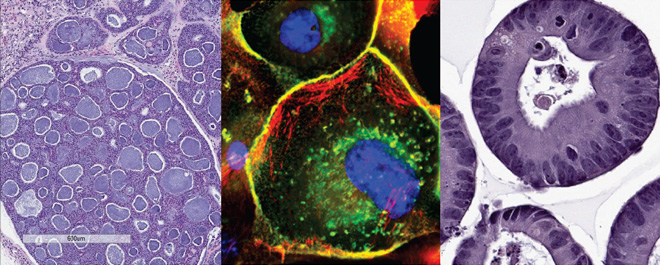NCI Patient-Derived Models Repository (PDMR)

Background of the PDMR
The National Cancer Institute (NCI) is developing a national repository of Patient-Derived Models (PDMs) comprised of patient-derived xenografts (PDXs), in vitro patient-derived tumor cell cultures (PDCs) and cancer associated fibroblasts (CAFs) as well as patient-derived organoids (PDOrg). These models will serve as a resource for public-private partnerships and for academic drug discovery efforts. These PDMs will be clinically-annotated with molecular information available in an easily accessible database and will be available to the extramural community.
In April 2012, the NCI hosted the Target Validation Meeting with academia and pharma participants to discuss the current state of preclinical models in cancer research. Several needs were identified at that meeting as well as in follow-up discussions with intramural and extramural investigators, academia, and pharma, including:
- Enhance reproducibility and transparency of preclinical data, and to justify (or not) investment in animal models used for preclinical therapeutics
- Clarify the role of PDXs in target identification and qualification
- Develop models allowing comparative assessment of molecular predictors of drug efficacy: PDXs, genetically engineered mouse models (GEMMs), conventional xenografts, conditionally-reprogrammed lines, organoids, etc.
- Establish predictive genomic signatures and/or proof of mechanism pharmacodynamics
Following this meeting and several discussions with intramural and extramural investigators, the NCI began evaluating and planning approaches to improve the ability of preclinical model systems to predict therapeutic success in the clinic. The PDMR is a key component of achieving this goal.
Goals of the PDMR
The NCI is generating PDMs from primary and metastatic tumor tissues and blood specimens supplied by NCI-supported clinical trials and NCI-designated Cancer Centers and will provide these models to the research community. These models will include a limited amount of patient data including previous clinical therapies, smoking history, and race/ethnicity and will have representative sequence for a sub-set of PDXs for a targeted gene panel, whole exome, and RNASeq. The PDMR also accepts previously derived PDX models developed at external sites. The features and services of the PDMR are as follows:
- Target of 1000 clinically-annotated early-passage patient-derived xenografts (PDXs) from tumor specimens and/or enriched circulating tumor cell (CTC) fractions
- Generate in vitro mixed cancer cell cultures from patient tumor specimens. When possible, the patient-derived cancer-associated fibroblast component will be expanded and cryopreserved in parallel
- Target of 75-100 unique patients per common cancer type such that the size of each molecularly-characterized subgroup is sufficient to power subsequent validation and/or efficacy studies. In addition, the NCI is specifically targeting collection of tissue from cancer types in need of more publically available biological models such as SCLC, pancreatic, bladder, head & neck, sarcoma, Non-Hodgkin Lymphoma, and melanoma
- Generate models from pre- and post-treatment specimens from the same patient
- Repository size should include a sufficient number of biologically and clinically annotated models to reflect genetic diversity and effects of therapy for application in:
- Target qualification
- Pharmacodynamic assay and predictive marker development
- ‘Preclinical’ clinical trials
- Provide SOPs based on PDMR best practices for tissue collection, PDM generation, and model quality control; thereby, setting the standard for generation, maintenance, and analy sis of PDMs
- Provide a standard set of molecular characterizations across models to allow selection of the best model for research, including:
- Targeted variant analysis using a CLIA-approved NCI Cancer Gene Panel
- Whole exome sequencing and gene expression analysis of early-passage PDMs and where possible, originating patient specimens
- Histopathology of early-passage PDMs and where possible, originating patient specimens
- Growth curves of consecutive PDM passages
- Early-passage cryopreserved PDX fragments or in vitro PDCs available for distribution
- DNA, RNA, and flash-frozen fragments for protein extraction from early-passage PDXs available for distribution





